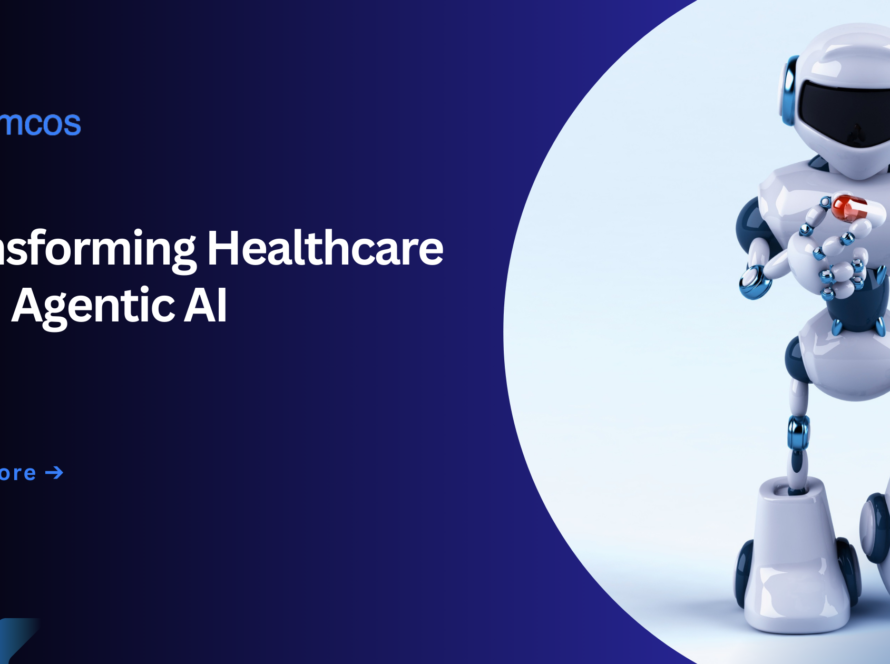Cloud computing in healthcare is making a big impact. Right now, 70% of health IT professionals say their organizations use cloud solutions and another 20% plan to adopt them within two years. This highlights how quickly cloud technology is spreading in healthcare.
The reason is simple – cloud computing solves problems that traditional systems can’t or make too costly to fix. It provides fast, efficient solutions on a scale never seen before. Because of these benefits, the healthcare cloud market is expected to reach $89 billion by 2027.
Keep reading to explore how cloud computing is transforming healthcare, setting new standards in efficiency, scalability and innovation.
Table of Contents
What is Cloud Computing in Healthcare?
It’s the on-demand use of computing resources like data storage, servers, databases, networking and applications, all provided over the internet by a cloud service provider. Instead of investing in expensive on-site equipment, hiring IT staff and managing maintenance, healthcare organizations easily rely on cloud providers to handle these tasks.
Cloud-based applications are easier to manage, especially when built using serverless architecture. Choosing a third-party provider instead of maintaining an in-house system significantly reduces IT costs. Plus, cloud solutions offer flexibility and scalability, allowing organizations to only pay for what they use and scale resources up or down as needed. Another big advantage is the speed of innovation which makes it easier to test new ideas, build prototypes, and launch new features faster.
Cloud computing is becoming increasingly popular in healthcare, whether as part of a digital transformation strategy or a response to changing industry demands. When used effectively, it greatly enhances operations, improves efficiency and supports better patient care.

How is Cloud Computing used in Healthcare?
Cloud computing in healthcare provides services like storage and servers over the internet for healthcare professionals to store and access data in one place. This makes sharing information easier and reduces the need for manual data management.
For years, healthcare has used cloud computing to improve data accessibility. It helps store medical records and patient information with seamless sharing between doctors and hospitals. But challenges are a part of this process as well. Some drawbacks include a shortage of experts to manage cloud systems, strict regulations and growing security risks. That’s why having strong support for cloud adoption in healthcare is a major bottom-line. There are multiple benefits that cloud computing serves for healthcare organizations. Here are the top 9!
1. Improving Medical decisions
Providing high-quality healthcare depends on easy access to patient records. A major challenge is that medical data is often stored in different systems and formats, making it hard to share. This creates data silos that limit access to important information.When doctors can’t access patient records, they have to rely on patients to recall their medical history. However, patients may forget key details, which can affect the quality of care. Cloud computing in healthcare solves this problem by storing data in a central location, accessible through a network connection. Cloud platforms use standard formats like JSON, XML, HL7, and FHIR for different systems to communicate and give doctors a full view of a patient’s history.
2. Advancing Preventative Care
Artificial Intelligence (AI) and Machine Learning (ML) used to be expensive and complex. Now, CSPs like AWS, Azure and Google Cloud make these technologies available to anyone with an internet connection. Healthcare providers use AI to identify at-risk patients. Since 5% of patients account for nearly 50% of medical costs, AI models flag these individuals and trigger proactive interventions, such as reminders for screenings.On the clinical side, AI helps detect diseases earlier. For example, it identifies early-stage breast cancer in CT scans, increasing survival rates. In genomics, AI helps detect individuals at high risk for diseases like Alzheimer’s for preventative care strategies.
3. Health Data & Analytics
Cloud computing in healthcare helps healthcare providers to collect and analyze large amounts of data from different sources in real time. With AI and machine learning, identifying health trends, disease patterns and treatment results have become easier than ever. These insights help in making better decisions and creating personalized care plans for improved patient outcomes and more efficient healthcare management.
4. Cutting Costs for Medical Record Storage
Healthcare generates a vast amount of unstructured data, such as doctor’s notes, lab reports and imaging scans. This type of data takes up a lot of space and is expensive to store.By law, medical records must be kept for at least seven years, leading many hospitals to store everything indefinitely. This makes storage a major expense. However, cloud storage solutions like Amazon S3 Deep Archive allow hospitals to store a terabyte of data for just over a dollar per month. This also frees up hospital space previously used for storage to be repurposed for patient care.
5. Strengthening Data Security
Cloud providers offer better security than on-premise data centers because they handle key security tasks like hardware protection, software updates and access controls. But different care settings must still secure the data they upload.Hospitals need to manage access controls, encrypt data and follow best security practices to prevent breaches. Many data leaks happen due to simple misconfigurations, not weaknesses in cloud security itself.
6. Interoperability
Cloud computing in healthcare makes it easy to access patient records from anywhere, anytime. Doctors easily review records from home or their office without needing to visit the hospital or clinic. Interoperability brings many benefits, such as helping doctors coordinate care for patients with chronic conditions. It also allows providers to spot gaps in treatment and create more personalized care plans.
7. Shifting to Value-Based Care
Healthcare is moving from a fee-for-service model (where providers are paid based on treatments given) to a value-based care model (where payments are tied to patient outcomes). The challenge is that value-based care requires extensive data sharing, analysis and AI-driven insights, things that are difficult with traditional IT infrastructure.
Cloud technology makes this transition possible by enabling better data interoperability and analysis to help providers focus on quality over quantity in patient care.

8. Collaboration in Patient Care
Collaboration plays a key role in the success of any organization, including healthcare. It means working together toward a common goal. While the healthcare industry has been slow to adopt collaborative practices, it is now recognizing their value. The benefits are clear—better patient care, improved efficiency, and lower costs. Cloud computing further enhances collaboration by making healthcare technology more effective.
9. Improving Clinical Efficiency
Doctors spend a lot of time taking notes, which can lead to long wait times and fewer patients being treated. In emergency situations, delays can even increase mortality rates. Cloud-based AI solutions like Microsoft and Epic’s Nuance DAX Express are changing this. This AI tool automatically generates clinical notes, reducing hours of documentation to seconds and allowing doctors to focus more on patient care.
How does Himcos Redefine Healthcare with Cloud Deployment?
From providing real-time clinical data to protecting patient information, cloud computing technology is helping healthcare run better than ever. Move workloads to the cloud, transition toward a hybrid environment. Himcos follows a vision to meet ongoing refinements and adapt plans to meet evolving needs. Recent reports show that medical organizations are considering cloud solutions, but security concerns and limited technical resources remain key obstacles. The right cloud and healthcare development partner can help solve both challenges.



